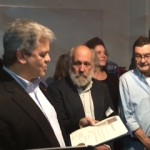The hunt is on. The City of Austin is searching for a new general manager for Austin Energy. It should take this opportunity to find a visionary leader who can prepare our city-owned utility to remain prosperous as the electricity market changes.
This is a transformational time for electric utilities. The business model that served utilities so well throughout the 20th century – buy or produce energy at large, centralized facilities and profit by selling that energy to customers – won’t keep utilities afloat throughout the 21st century.
As solar prices continue to drop, more and more customers will choose to use solar at their homes and businesses, reducing the amount of energy that utilities, including Austin Energy, can sell. Declining battery prices will only add to the effect and will give customers an affordable off-grid option. And as energy prices and limits on carbon emissions increase, energy efficiency improvements will become even more attractive, further reducing the need for centrally produced energy.
The next leader of Austin Energy needs to recognize this new reality and be fully committed to reform Austin Energy’s business model to enable the utility to not only survive these changes, but to flourish in new energy markets they transform and develop. In addition to prioritizing a rapid transition to 100% renewable energy, she should be committed to innovating to incorporate energy efficiency, distributed energy (including solar), energy storage, and demand response into the utility’s business model. Austin Energy must find ways to provide and profit from a wide range of energy services that are compatible with a carbon-free future.
The new Austin Energy general manager will need to be someone who is capable of gaining the respect of the workforce and harnessing their collective abilities to provide excellent customer service, even as the definition of those services is changing. And she will need to ensure that all staff have the necessary technical skills to meet the utility’s needs and avoid costly mistakes, such as the billing system fiasco.
Navigating these changes while keeping the utility prosperous will require excellent financial acumen and experience setting transparent operating and capital budgets. Austin Energy is an important source of revenue for the city, so a strong commitment to public power will be critical. The general manager will need the knowledge and political savvy to continually convince the Texas Legislature that the utility is acting in the best interests of its customers in order to stave off deregulation.
The needed utility transformation will only occur with the blessing of the Austin City Council and the support of the community, so the next general manager must be willing and able to work collaboratively and respectfully with all parties, including public interest groups, citizen commissions, chambers of commerce, and research organizations. Concise, timely, and honest communication with the City Council and the public will be required.
The next Austin Energy general manager must have the ability to bring together diverse community interest groups and contentious parties to garner support for needed changes. As Austin continues to struggle with affordability, she must have experience and empathy in working with low and moderate income customers and be committed to reducing electric bills for this group with energy efficiency and distributed solar programs.
We’re looking for a talented, visionary leader who is committed to working for the public good. If that’s you, please apply.










